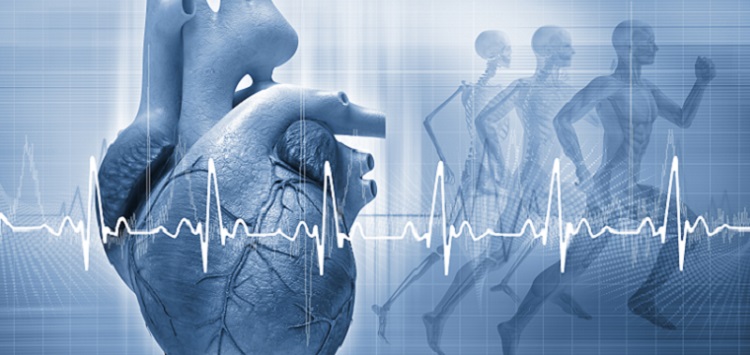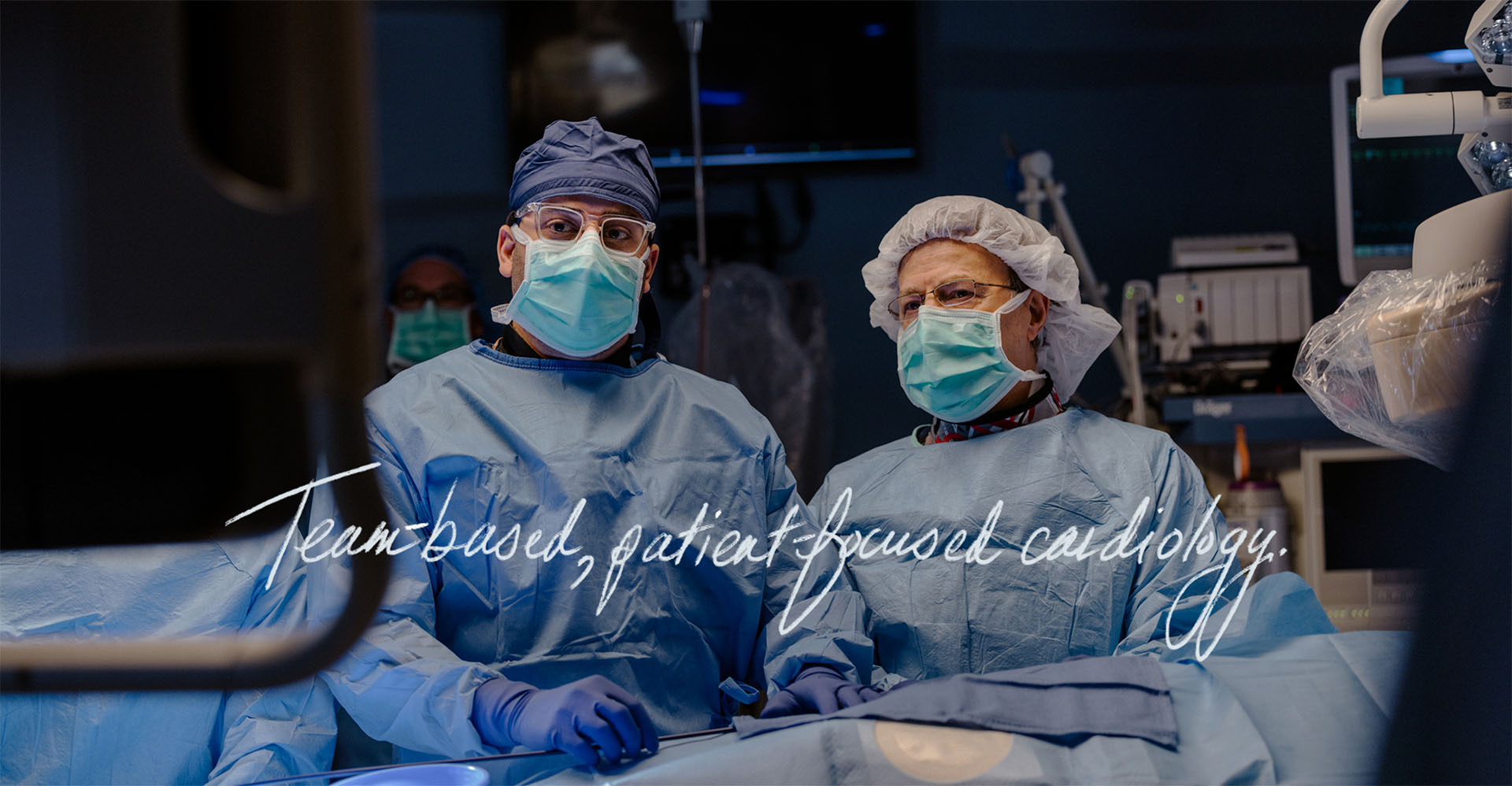The ultimate heart health checklist from Cardiology Jupiter
The ultimate heart health checklist from Cardiology Jupiter
Blog Article
Comprehending the Importance of Cardiology in Modern Healthcare Providers
Cardiology plays a crucial function in modern health care, specifically as cardiovascular disease continues to be the leading reason of mortality worldwide. Breakthroughs in diagnostics and treatment have transformed individual treatment, making it possible for earlier interventions and enhanced results. The change towards preventive cardiology equips individuals to handle their health proactively. As modern technology proceeds to evolve, the integration of ingenious remedies may further redefine cardiology's influence on public health, motivating a closer assessment of emerging patterns and their effects.
The Occurrence of Heart Condition and Its Effect On Public Health And Wellness
Although heart problem continues to be the leading reason of death worldwide, its effect prolongs far past private patients to influence public wellness systems and economic climates. The high frequency of cardiovascular disease puts a considerable stress on health care resources, demanding boosted funding for avoidance, therapy, and rehabilitation programs. Public health initiatives should deal with risk factors such as obesity, cigarette smoking, and less active lifestyles, which add greatly to the rising occurrence of heart conditions.Moreover, the economic problem connected with cardiovascular disease is enormous, encompassing not just straight clinical costs but additionally indirect expenditures connected to lost performance and premature mortality. Communities face difficulties in handling these prices, frequently leading to disparities in health care access and results. As the population ages and lifestyle-related risks proceed to escalate, the seriousness for efficient cardiology treatments becomes paramount. Resolving heart disease is not only a matter of specific wellness however also an important public health and wellness priority.
Breakthroughs in Cardiac Diagnostics and Imaging Techniques
Current innovations in heart diagnostics and imaging techniques have actually changed the area of cardiology, boosting the capability to keep an eye on and detect heart diseases. Methods such as cardiac MRI, CT angiography, and echocardiography have actually ended up being significantly advanced, supplying detailed pictures of cardiac structures and functions. These techniques enable the early recognition of conditions like coronary artery disease, cardiac arrest, and valvular disorders.Moreover, improvements in non-invasive diagnostics, such as wearable modern technology and remote tracking tools, have equipped individuals and health care companies. These devices promote real-time monitoring of heart rhythms and other crucial indications, resulting in timely treatments. Additionally, synthetic knowledge is being incorporated right into imaging analysis, enhancing precision and efficiency in diagnosis.
Advancements in Treatment Choices for Heart Conditions
Current improvements in cardiology have actually led to substantial advancements in therapy choices for heart disease. These consist of sophisticated surgical techniques that boost step-by-step outcomes and emerging medications that offer brand-new avenues for therapy. As the area evolves, these technologies play a vital function in boosting client care and results.
Advanced Surgical Techniques
Innovations in medical techniques have transformed the landscape of cardiology, offering brand-new wish for individuals with heart conditions. Minimally intrusive treatments, such as catheter-based interventions, have significantly decreased healing times and hospital remains. Methods like robotic-assisted surgical procedure enhance accuracy, enabling doctors to navigate intricate physiological structures with higher accuracy. Developments in imaging modern technology assist in real-time visualization during procedures, boosting results. Transcatheter aortic shutoff substitute (TAVR) exhibits a development in treating aortic constriction, enabling shutoff replacement without open-heart surgical procedure. Furthermore, hybrid approaches that incorporate medical and catheter-based approaches offer tailored remedies for various heart concerns. These advanced surgical techniques not just improve individual safety however also broaden treatment choices, highlighting the important role of innovation in modern-day cardiology practices.
Arising Medications and Therapies
As the landscape of cardiology remains to evolve, emerging therapies and drugs play an essential duty in enhancing therapy alternatives for heart disease. Developments such as unique anticoagulants and progressed lipid-lowering representatives have transformed the monitoring of cardio illness, greatly reducing client morbidity and mortality. In addition, the development of genetics treatments and regenerative medicine uses promising opportunities for dealing with problems formerly deemed permanent. Clinical tests are continuously disclosing the efficacy of these therapies, pushing the boundaries of typical therapies. The assimilation of electronic health technologies helps with customized medicine, allowing for tailored treatment strategies based on hereditary and way of living aspects. Jointly, these innovations highlight the vibrant nature of cardiology, improving patient outcomes and redefining standards of treatment in modern healthcare.
The Function of Preventive Cardiology in Individual Treatment
Preventive cardiology plays a vital function in individual treatment by concentrating on the recognition of threat variables that add to heart disease. Through way of living adjustment approaches and early discovery methods, healthcare providers can properly lower the occurrence of cardiovascular occasions - Cardiology care. This proactive strategy not just improves individual results but additionally promotes long-term health and wellness
Threat Variable Recognition
While cardiovascular illness continue to be a leading reason for morbidity and mortality worldwide, reliable threat variable recognition acts as a keystone of precautionary cardiology. Identifying risk variables such as high blood pressure, family, hyperlipidemia, and diabetes mellitus background is important for early treatment. Health care professionals make use of various screening approaches to assess these factors, permitting customized safety nets. Additionally, comprehending a client's lifestyle choices, such as smoking cigarettes and physical inactivity, additionally educates danger assessments. This detailed examination allows clinicians to create customized care strategies focused on mitigating risks. By prioritizing risk variable identification, healthcare systems can enhance person end results and reduce the general concern of cardiovascular illness, ultimately adding to improved public wellness methods and source allotment.
Way Of Living Alteration Strategies
A multitude of researches highlights the vital role of way of life adjustment techniques in lowering heart disease risk. These methods incorporate nutritional adjustments, enhanced physical task, smoking cigarettes cessation, and weight monitoring. By embracing a heart-healthy diet regimen rich in fruits, vegetables, whole grains, and lean proteins, people can reduce cholesterol degrees and blood pressure. Regular physical task strengthens the heart and boosts total cardiovascular health and wellness. Additionally, stopping cigarette smoking greatly minimizes the danger of heart disease and boosts healing prices for those with existing conditions. Weight management further contributes to cardio wellness by reducing other threat variables such as diabetic issues and high blood pressure. Executing these lifestyle changes not only advertises private well-being however likewise functions as a foundation of precautionary cardiology check my source in client treatment.
Very Early Detection Methods
Lifestyle alterations significantly contribute to reducing heart disease risks, but they are most efficient when coupled with very early discovery strategies. Preventive cardiology emphasizes the significance of recognizing prospective heart concerns before they intensify into severe conditions. Strategies such click here for more info as blood pressure monitoring, cholesterol screening, and advanced imaging technologies like echocardiograms play vital roles in assessing cardio health and wellness. Biomarkers and hereditary screening likewise boost the accuracy of early detection, enabling customized preventative approaches. Routine cardiac risk assessments empower doctor to step in proactively, possibly protecting against cardiac arrest and strokes (Cardiology Jupiter). By integrating these early discovery methods into regular care, individuals can gain from timely lifestyle interventions and targeted therapies, inevitably improving outcomes and improving lifestyle
Integrating Technology Into Cardiology Practices
As advancements in innovation proceed to reshape various fields, the combination of innovative devices and systems into cardiology practices has ended up being essential for boosting client care and results. Telemedicine systems allow cardiologists to check clients remotely, enhancing access to care while lowering the worry on health care facilities. Wearable gadgets, such as smartwatches, make it possible for continuous heart price tracking, notifying both medical professionals and people to prospective problems in real-time. In addition, fabricated intelligence (AI) is being made use of to analyze substantial amounts of cardiac information, assisting in very early medical diagnosis and individualized treatment plans. Advanced imaging techniques, including 3D echocardiography, boost visualization of heart frameworks, causing much more specific interventions. Digital health documents (EHRs) enhance individual details monitoring, making sure that cardiologists have prompt access to crucial information. With each other, these technological developments are changing cardiology, promoting positive monitoring and improved health and wellness outcomes for patients with cardiovascular problems.
The Relevance of Client Education and Engagement
Client education and learning and interaction play a pivotal duty in the monitoring of cardio health and wellness. By furnishing patients with expertise regarding their problems, therapy options, and lifestyle changes, doctor encourage individuals to take an energetic duty in their treatment. This proactive technique can result in improved adherence to suggested drugs, nutritional modifications, and exercise routines, ultimately lowering the threat of complications.Engagement also fosters a strong patient-provider connection, urging open interaction and trust. When clients feel informed and included, they are more probable to voice problems and ask concerns, which can result in much better clinical end results. Furthermore, instructional sources, such as workshops or digital systems, can enhance understanding and promote self-management approaches. In general, prioritizing client education and interaction is essential for improving cardio health, improving high quality of life, and minimizing medical care prices connected with heart diseases.
Future Trends in Cardiology and Their Possible Impact

Regularly Asked Concerns
What Way Of Living Changes Can Lower Heart Illness Danger?
The present concern addresses way of living changes that can considerably minimize cardiovascular disease risk. Cardiology care. Taking on a balanced diet regimen, participating in normal physical activity, keeping a healthy weight, handling stress and anxiety, and staying clear of cigarette can especially enhance cardiovascular health and wellness
Just How Can I Identify Early Signs of Heart Troubles?
Recognizing very early signs of heart problems involves monitoring symptoms such as upper body discomfort, lack of breath, fatigue, and irregular heartbeat. Timely recognition of these indications can trigger needed medical analysis and treatment for much better outcomes.
What Are the Differences In Between Cardiologists and Heart Surgeons?
The distinctions between cardiologists and cardiac cosmetic surgeons exist in their functions; cardiologists primarily manage and identify heart conditions via non-invasive approaches, while cardiac specialists do surgeries to remedy structural heart problems. Each plays a vital, unique function.

Exactly how Frequently Should I Obtain My Heart Wellness Checked?
The frequency of heart checkup differs based upon specific risk factors. Normally, adults ought to undergo analyses each to two years, while those with current problems may need even more frequent assessments as suggested by medical care experts.
What Function Does Genetics Play in Cardiovascular Disease Threat?
Genetics significantly affects heart problem threat, with familial patterns indicating inherited conditions. Details genetics can incline people to high blood pressure, cholesterol concerns, and various other cardiovascular issues, highlighting the relevance of genetic screening in reviewing heart health. Heart disease stays the leading reason of fatality internationally, its effect extends much beyond private patients to affect public health systems and economic climates. Public wellness campaigns have to address danger factors such as excessive weight, smoking, and less active way of livings, which add considerably to the rising occurrence of heart conditions.Moreover, the economic worry linked with heart condition is enormous, including not just direct medical prices yet likewise indirect expenses associated to shed performance and early death. Precautionary cardiology plays an essential role in person care by concentrating on the identification of threat aspects that contribute to heart disease. Fabricated knowledge (AI) and machine understanding are enhancing diagnostics and client tracking, allowing early discovery of heart illness. The differences in between cardiologists and heart cosmetic surgeons exist in their roles; cardiologists largely diagnose and take care of heart conditions through non-invasive techniques, while cardiac specialists perform surgical procedures to fix architectural heart problems.
Report this page